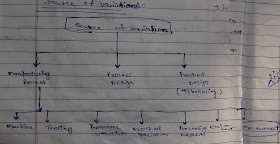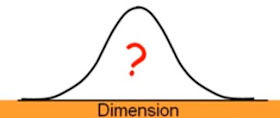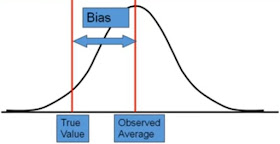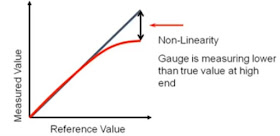Today, We are going to study on quality concept.
First of all, we are very thankful to you that you are visiting this website.
Now,
Main topic is that,
DEFINITION:
Quality is meeting the requirements of customers which is not restricted to the functional characteristics of the product and services.
First of all, we are very thankful to you that you are visiting this website.
Now,
Main topic is that,
QUALITY:
INTRODUCTION:
In today's era, competition in the field of business has increased a lot, due to which the focus is on quality in business sector.
By the way, there can be a lot of quality definitions, some of the important definitions that we will talk about.
Quality is meeting the requirements of customers which is not restricted to the functional characteristics of the product and services.
Quality means different things to different people and in different situations. This list gives some informal definitions of quality:
- Quality is not a program; It is an approach to business.
- Quality is a collection of powerful tools and concepts that are proven to work.
- Quality is defined by the customers through their satisfaction.
- Quality involves continuous improvement and success events.
- Quality tools and techniques are applied in every aspect of the business.
- Quality increases customer satisfaction, reduces cycling time and cost. and eliminates errors and rework.
- Quality isn't just for businesses. It works in non-profit organizations such as schools, health care and social services, and government agencies.
The above definitions show that quality is difficult to define, and no definition can be all-inclusive. The word 'Quality' is highly subtle, and allows for many inter-prepositions. For example, a popular online dictionary defines quality as "an inherent or distinguishing characteristic" (http://dictionary.reference.com/search?q=quality); This definition is only the first of ten distinctly different definitions from the same authority.
Quality: The totality of the features and characteristics of a product or service that depend on its ability to satisfy perceived or implied needs. Not to be mistaken for "degree of excellence" or "fitness for use" that meet only part of the definition. (ISO 8402)
Below points shows that this definition is actually quite interesting:
- It is published by ISO, an international standards organization.
- It specifically contradicts the definition that Joseph M. Juran used throughout his career, "Quality- fitness for use."
- In contrast, Philip Crosby used the definition, "quality conformance to specifications," which is also narrower than ISO 8402.
In short, "Meeting the customer's requirements".
Sometimes, some people consider the quality and reliability to be the same. But it is different from the quality. It's definition is as follows,
Reliability: It is the ability of product and service to continue to meet the customer's requirements. It describe the long term impact.
A quality product is one that meets the customer's requirement and if the product is continuously meeting the customer's requirement, then that product is said to be reliable.
According to ISO 9001:2015, Quality is the degree to which a set of inherent characteristics which fulfills customer's requirement.
According to Phillips B. Crossby, Quality is conformance to requirements.
According to W. Edward Deming, Quality is a predictable degree of uniformity and dependability at low cost and suited to market.
In simple words,
Quality is a relative term and it is used with reference to the end use of the product.
It represents the property of the product that are valued by the consumers.
For example : A gear used in the sugarcane juice extracting machine may not posses a good quality, tolerance and accuracy as compared with the gear used in head stock of a lathe, still it may be considered of good quality if it works satisfactorily in the juice extracting machine.
Sometimes, some people consider the quality and reliability to be the same. But it is different from the quality. It's definition is as follows,
Reliability: It is the ability of product and service to continue to meet the customer's requirements. It describe the long term impact.
A quality product is one that meets the customer's requirement and if the product is continuously meeting the customer's requirement, then that product is said to be reliable.
According to ISO 9001:2015, Quality is the degree to which a set of inherent characteristics which fulfills customer's requirement.
According to Phillips B. Crossby, Quality is conformance to requirements.
According to W. Edward Deming, Quality is a predictable degree of uniformity and dependability at low cost and suited to market.
In simple words,
Quality is a relative term and it is used with reference to the end use of the product.
It represents the property of the product that are valued by the consumers.
For example : A gear used in the sugarcane juice extracting machine may not posses a good quality, tolerance and accuracy as compared with the gear used in head stock of a lathe, still it may be considered of good quality if it works satisfactorily in the juice extracting machine.
We hope you will understand this topic.
We have given a example to understand this.
Thank you
Some of related question that help to improve your basic knowledge.












